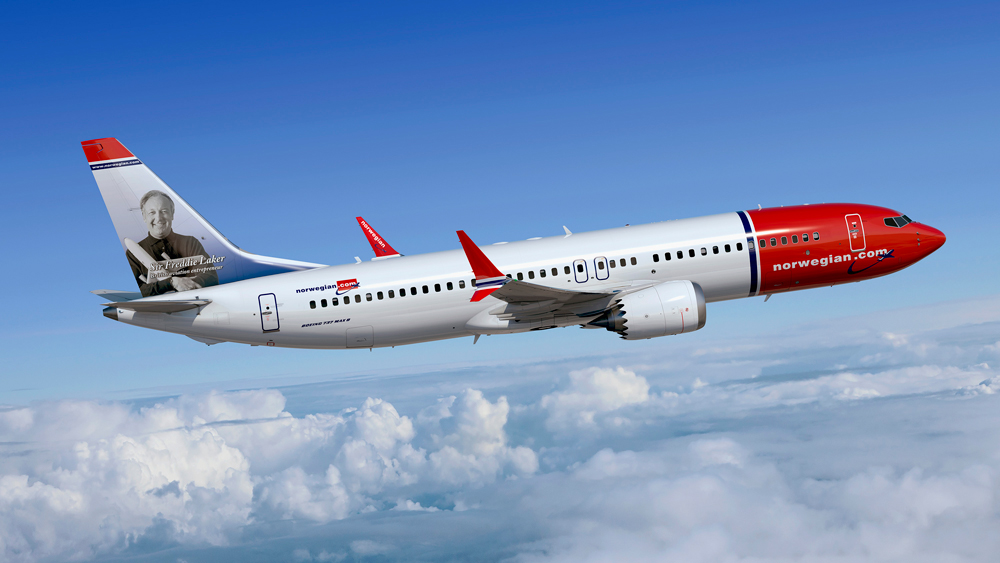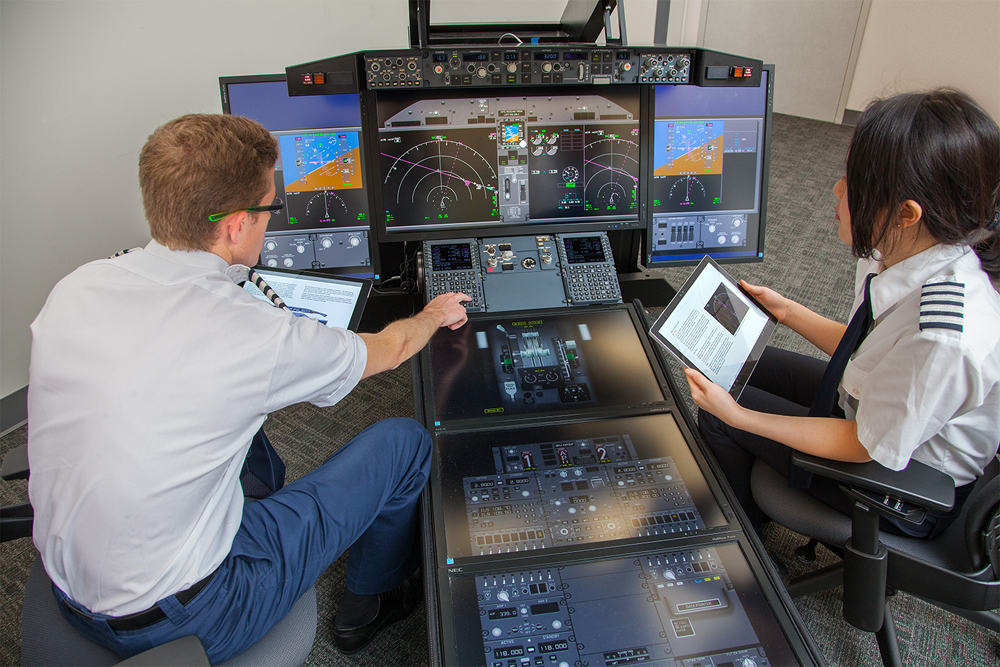A new era in Boeing's more than 50-year history with the 737 began on 16 May, when the company delivered the first Max-series example of the ubiquitous twinjet to Malindo Air. Part of the Lion Air group, the Malaysian mainline carrier swiftly followed this milestone by placing its lead 737 Max 8 into revenue service.
Flight Fleets Analyzer shows that another 15 CFM International Leap-1B-engined Max 8s had been delivered by early September, including a second example for Malindo and aircraft for a further four airlines: Flydubai, Lion Air, Norwegian Air International and Southwest Airlines.
Southwest received its first Max 8 in late August, and the type is scheduled to commence revenue service with the carrier on 1 October.
The Dallas-headquartered airline's rapid introduction plan will see nine of the new twinjets entering use on the same day, and it expects to end 2017 with 14 of the type. The world's biggest 737 operator – Fleets Analyzer shows its current active fleet as totalling 713 units – Southwest has orders for 170 Max 8s and 30 smaller Max 7s, and was the first carrier to commit to the new models.
Several additional customers, including high-profile buyers such as American Airlines, will also take their lead examples of the new-generation narrowbody before the end of this year. As of 31 July, Boeing listed its total orders and commitments for the 737 Max family as standing at 3,816 units, for 89 customers.
While many of the passengers who will fly on the Max might not notice much difference from the 737's previous NG standard, bar perhaps the larger Leap engines, dual-feather winglets and redesigned tail cone, Boeing is introducing a new training methodology, making it a different story for pilots and maintainers.
In addition to the design updates which have combined to provide the Max variant's 14.5% reduction in fuel burn, the 737's cockpit environment has also moved on significantly from the previous NG model, almost 6,000 examples of which are in service around the globe.
Boeing Commercial Airplanes (BCA) customer training specialist Scott Andersen says the company is also delivering a new crew training philosophy with the Max, which is intended to enhance the experience both for those starting their airline careers and seasoned pilots transitioning from the legacy 737.
"The Max is a really exciting, brand-new aircraft – the training should be just as exciting," Andersen says. Pointing to the technological enhancements being drawn on to deliver pilot and maintainer instruction on the incoming type, he adds: "We don’t just want to do the last 20 years [of instruction] for the next 20 years."

Norwegian received its first two examples in late June, and plans to use them on transatlantic routes
Boeing
Speaking at the Boeing Flight Services Centre in Crawley, West Sussex – the first European facility to have introduced a full-flight simulator (FFS) and associated flight training device (FTD) flat-panel trainers for the 737 Max 8 – Andersen notes: "Technology is a requirement, not a luxury."
Andersen says today's student pilots are used to learning in a group environment, rather than just following the self-paced classroom instruction model of recent years, so the airframer has adapted the way it will help carriers in preparing their personnel.
"From day one on the Max programme you're going to learn in the cockpit," he says, with students to work as a crew. This will enable them to gain valuable early experience of sitting in both seats, he adds, noting: "I can be a better first officer if I have an understanding of what the captain does." The crew concept will also be used by students in the full simulator, after only seven days of ground school and 48h using the PC-based FTDs, which Andersen describes as "interactive, intelligent training devices".
"We are giving students a better experience, which is not about memorising and regurgitation," he says. "The FTD will tell a student if they've done it wrong: it can introduce, practice and demonstrate."
As with the FFS, this equipment is supplied by Tru Simulation & Training. Boeing awarded the company an exclusive, 10-year contract to equip its campuses around the world with full flight training suites for the Max.
Andersen says the new FTD allows Boeing to move away from traditional classroom-based instruction model to one of "facilitated delivery". This shift also supports the increased use of automation in modern-day cockpits, he notes.
Located a short distance from London Gatwick airport, Boeing's Crawley facility follows its Miami, Florida and Singapore campuses in receiving the devices, and will be followed by another in Shanghai, China.
Boeing's UK training centre secured certification approval for its new FTD equipment for the Max 8 in June, and campus manager Angela Golder expects demand for the site's newest simulator to build from September. Until now it has been used to prepare Boeing instructors for the task of supporting operators including Norwegian.
"Norwegian is very excited about this [training] programme," Andersen says. "We will run its first crews through this exact system."
The low-cost carrier, which took delivery of its first two Max 8s in late June, has signed a training services deal with Boeing to support its operations with the type. Its operating model includes serving transatlantic routes with the narrowbody, from airports in Ireland, Norway and Scotland to the east coast of the USA.
Bjørn Kjos, chief executive of the Oslo-based carrier, describes the introduction of the 3,515nm (6,500km)-range twinjet as opening the door "to a totally new concept" for Norwegian. Additional airlines are likely to follow its lead, if it can convince passengers of the benefits of long-haul, narrowbody flights.
While Boeing will prepare all of the operator's pilots for the new model, other Max customers will acquire their own simulators to satisfy their training needs.
Tru will deliver an FFS for the Max 8 to Icelandair in mid-2018, with the device to be installed at the carrier's Rejkjavik base. The simulator provider says its "Train@Home" model – already employed with the airline's 757s – provides "substantial savings on the cost of pilot training operations", and "also increases the availability of an airline’s pilots to fly".
For experienced pilots, the differences between the 737's NG series and the Max are minimal, meaning they can convert to the new standard swiftly and easily, despite the addition of features including head-up displays. Boeing says differences training for an NG pilot will total only three to five days of classroom-based instruction. But for those starting out on their path to the cockpit, Andersen underscores the importance of selection practices adopted by airlines. "In our industry today we can't weed out [students]; we need to adapt and include," he says.

PC-based flight training devices allow students to learn in a crew environment from day one
Boeing
Boeing's training site near Gatwick currently houses four simulators for the 787, along with lone devices for the 737NG, 737 Max and 777. The company used this and other equipment to run 650 training courses in the 2016-2017 period, including delivering instruction for 1,700 pilots. It is soon to be further expanded, with another four simulator bays being built. With 11 operational FFS, the facility will rank as Boeing's second largest training campus, after its main centre in Miami.
Meanwhile, Golder says Boeing has begun providing ab initio pilot training for some carriers in China, and is exploring the potential of doing the same in Europe via a training school partner. This approach would support those airlines which do not require – or lack the scale – to have their own instructors. "We can be a one-stop shop for the customer," she notes.
The company's training footprint in Singapore is also expanding, with its FFS for the Max 8 having joined five others at the facility: two each for the 737NG and 787-8, and one for the 777-300. Another, for the 787-9, will be ready for use during November. The Singapore campus currently serves 90 airline customers across its flight, maintenance and cabin-crew courses, including Biman Bangladesh, Korean Air and Scoot.
SilkAir, which will take its first of 37 Max 8s in November, is a major customer for the new simulator, says Patrick Curtin, Boeing Singapore's head of campus operations.
In addition to providing training for an airline's instructors, line and trainee pilots, Boeing's philosophy for the Max also is changing the way that maintenance personnel are being prepared for operations with the new type.
Showcasing the Crawley site's new maintenance training classroom, BCA's Jayson Remfert notes: "We can bring the whole suite of information."
Advances introduced with the Max include the ability to show students real images of the aircraft and its systems via a 360˚ virtual tour of the twinjet on the ground. This feature is particularly valuable when showing a group the location and function of equipment located in areas such as within the 737's electronics bay. "It's difficult to access in a real aircraft," he says of the area, nicknamed the "doghouse", which is accessed via a small hatch behind the aircraft's nose landing gear.
Noting that trainee maintainers are also able to take a laptop home to support their learning, Remfert says: "It gives them a lot more flexibility." Boeing learned from its experience with introducing the 787 to service in preparing the technology for the new type, he notes. "For the Max, we knew we had to build in portability."
While for some customers the provision of maintenance training will only support entry-into-service, Remfert notes: "We want our training to reach all of those [maintenance] employees, to get the best and the safest learning. We want them to fail elements in the classroom – not on the real aeroplane."
With the wider 737 Max family – through its 7, 8, 9 and 10 models – to represent Boeing's narrowbody twinjet offering for many years to come, the company's new way of preparing pilots and maintainers will swiftly be put to the test, as the type become a more frequent sight at airports around the world.
Additional reporting by Aaron Chong in Singapore and Ghim-Lay Yeo in Las Vegas
Source: FlightGlobal.com


























